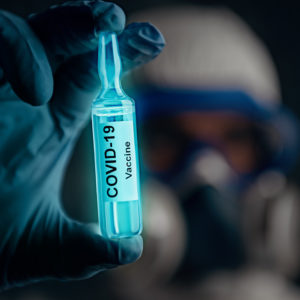With over four million people killed worldwide, the toll of COVID-19 has been devastating, and the scars it leaves will run deep.
At the same time, the science and technology that have emerged from fighting the disease give us reasons for hope — not just for ending the pandemic, but for beating other major 21st-century health threats.
We have the creativity and hard work of many thousands of scientists to thank for these breakthroughs. But they couldn’t have done it absent a supportive legal environment. U.S. companies keep making discoveries because of intellectual property laws that ensure continuous investment in research and development.
There are those — in the United States and abroad — who say they would like to void intellectual property rights, for instance via a World Trade Organization proposal to strip patent protection from COVID-19 vaccines. It’s hard to fathom the loss to future scientific advancement such measures would cause. But a consideration of discoveries from the last 18 months gives some idea. At least three major innovations have come out of the pandemic that, collectively, stand a good chance of saving more than four million lives.
First, scientists proved they could use messenger RNA to build effective vaccines. This breakthrough has implications that go far beyond Covid-19. Scientists are now researching mRNA vaccines against other viral diseases, as well as Alzheimer’s and cancer.
A second major advance is the development of a vaccine that can prevent not just one strain of a disease, but all variants. Our first COVID-19 vaccines utilize only the pathogen’s spike protein to generate an antibody response, but the spike protein is highly prone to mutations. Now, scientists are looking at using another protein, known as the nucleocapsid, which is less prone to mutations and generates a strong T cell response.
This practice of targeting alternative proteins could lead to a single shot that would vaccinate against all mutations of COVID-19, as well as related viral respiratory diseases. The same method paves the way for another possibility. We may soon know how to reprogram a patient’s body to recognize cancer cells as foreign and attack them.
The third innovation is a filter that reduces pathogens — such as viruses or bacteria — in the blood. During the pandemic, two U.S. companies advanced the development of such filters to detect Covid-19, one of which has proven highly effective in treating severe COVID-19 patients.
This filter, about twice the size of a soda can, can lower the pathogen level in one’s blood 10,000-fold in four hours. Such a rapid reduction is akin to taking a highly effective drug for a week, and can spell the difference between life and death. A recent study of patients with severe COVID-19 found those put on the filter were four times more likely to survive than the control group.
With about half of all hospital deaths caused by blood infections, the lifesaving potential of blood filters is enormous.
Coronavirus has spurred dozens of innovations like these. But the risky research and development work that leads to breakthroughs relies on patents and other intellectual property rights. They grant inventors an exclusive period during which to make and sell their products. This allows companies to recoup expenditures and sometimes turn a profit, which ensures continued investment.
The world desperately needs vaccines, and some of those who wish to scrap patents are well-intentioned, believing that doing so would speed up the delivery of shots.
A better approach, though, would be to either subsidize vaccine manufacturing and donate the doses abroad, or to encourage vaccine developers to enter licensing agreements that allow safe, reliable foreign manufacturers to produce their products.
Like past global health crises, the mass tragedy of the pandemic has had a silver lining, furthering the science of curing disease. But we need our system of intellectual property rights intact to ensure that the innovation continues.

